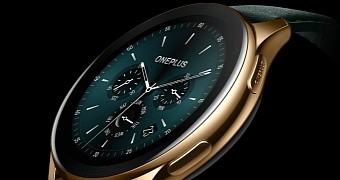OnePlus has officially announced its first smartwatch one week ago, and in a FAQ published on its forums, the company discusses some of the choices it made for this device.
One of them concerns the operating system, as OnePlus Watch doesn’t run Wear OS, as so many people would have expected, but RTOS.
And OnePlus says that choosing between the two was pretty difficult, but in the end, it all came down to battery life.
“When making a decision like this, we always have to weigh the benefits with the challenges to come up with what we think will result in the best user experience. We found that both operating systems had a lot of great things to offer, but some drawbacks as well. So after weighing all of our options, we ended up choosing RTOS primarily because of the ability to better offer our users a longer battery life,” OnePlus explains.
Three-chip configuration
The OnePlus Watch also comes with a smooth display experience, and product Manager Raymond Z. explains this is something that’s powered not only by the optimizations it made to the device but also by the operating system.
“But of course, battery life is only one part of the product experience. We have been at the forefront of display smoothness since the OnePlus 7 Pro. This time, with the help of our display team, we imported the high-frame display debugging experience into the OnePlus Watch. We worked on optimizing the bottom layer of the display architecture, improving the fluency of more than 50 scenes, and changing the display frame rate from the industry’s usual 30 fps to more than 50 fps. In fact, the frame rate of some scenes even doubled. It is no exaggeration to say that this is probably one of the smoothest smartwatches with long battery life available in the market today,” the company says.
OnePlus has also revealed that the watch uses a three-chip combination that includes the ST32, the Apollo 3, and the Cypress.

 14 DAY TRIAL //
14 DAY TRIAL //